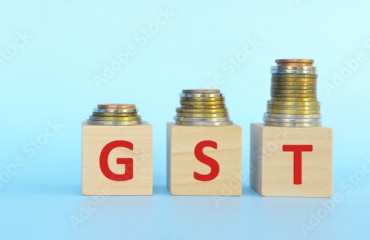
E-way bill generation hit a new record of 109 million in September, marking an 18% year-on-year rise as supply chains ramp up for festival season demand. This surge signals robust economic activity and improved compliance.
- E-way bill generation hit a new record of 109 million in September, marking an 18% year-on-year rise as supply chains ramp up for festival season demand. This surge signals robust economic activity and improved compliance.
India's supply chain activity hit a new milestone in September as e-way bill generation surged to 109 million, marking an 18% jump from the same period last year, according to data from GSTN, the company handling GST returns. The uptick comes as businesses ramp up operations during the festival season, which is set to further boost production, distribution, and sales.
This increase in e-way bills—electronic permits required for shipping goods across states—also reflects a 3% rise over August's figures. The festival season, which kicks off in August-September with Raksha Bandhan, Ganesh Chaturthi, and Onam, leads into Navratri, Dussehra, Diwali, and concludes with Christmas at the year's end.
E-way bills typically see another spike toward the end of the financial year as companies rush to meet annual targets by clearing inventory.
The surge in e-way bill generation indicates heightened movement of raw materials, intermediates, and finished goods. This bodes well for goods and services tax (GST) collections, which are closely tied to the volume of goods transported.
"The steep increase in the e-way bill issuance in September will hopefully lead to good GST revenue collection in October and alter the trend of modest collection increase observed last month," said M.S. Mani, partner at Deloitte India.
In September, the central and state governments collected ₹1.73 trillion in GST, a 6.5% increase from a year earlier, as reported by Mint on 1 October. While GST receipts include revenue from services, the e-way bill data primarily tracks goods movement, offering insight into the broader economic recovery.
Increased e-way bill activity could positively influence tax revenues. As a high-frequency economic indicator, a rise in e-way bill generation typically signals an improvement in overall economic activity.
The significant increase in e-way bills in September can be attributed to factors including economic recovery, the onset of the festive season, improved GST compliance, and the ongoing digitalization of supply chains, said Rajat Mohan, senior partner at AMRG & Associates, a chartered accountancy firm.
Post-pandemic business recovery has spurred higher demand for goods, leading to more movement and the corresponding generation of e-way bills, said Mohan.
As India enters its peak festival period in October, Mohan expects even higher levels of production and distribution activity, further boosting e-way bills and pushing GST collections to new records. Government efforts to enforce GST compliance and streamline the e-way bill system have also contributed to smoother business operations, he added.
Mixed signals
Despite the encouraging e-way bill data, other economic indicators suggest a more nuanced picture. Manufacturing output in September grew but at its slowest pace since January, according to S&P Global's HSBC India Manufacturing PMI. The PMI dropped to 56.5 from 57.5 in August, indicating continued expansion but at a moderated pace. Export orders softened, capping growth potential in the sector.
Meanwhile, auto sales—a key indicator of consumer demand—showed signs of strain. Retail vehicle sales contracted by 9.26% in September, despite an overall 6.5% growth in the first half of the fiscal year, HT Auto reported citing data from the Federation of Automobile Dealers Associations.
The auto industry remains cautiously optimistic, eyeing the festive season for potential recovery.
Looking ahead: Digital reforms and GST growth
GST collections have remained robust, with monthly average collections climbing each year as authorities enhance data gathering and IT-enabled enforcement. In the first half of this fiscal, the average monthly GST collection reached ₹1.81 trillion, up from ₹1.68 trillion the previous year. As the GST Council examines tax rate rationalization, the country could see further growth in its tax base and improved compliance.
With supply chains running at full throttle and government enforcement tightening, the outlook for October's GST revenues looks bright, even as mixed signals from other sectors keep the broader economic recovery in focus.
